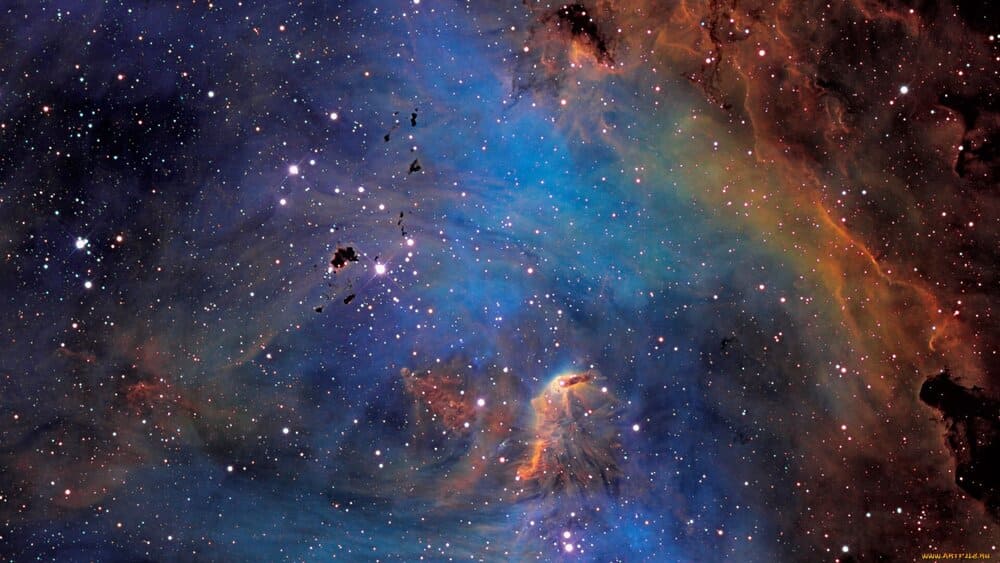Nebulas, often referred to as the “nurseries of the cosmos,” are vast clouds of gas and dust scattered throughout the universe. These celestial structures play a crucial role in the life cycle of stars, providing the raw materials from which stars are born. Their understanding offers insights into the fundamental processes that govern the evolution of galaxies and the universe itself.
Types of nebulas
They come in various forms, each with unique characteristics and roles in star formation:come in various forms, each with unique characteristics and roles in star formation:
- Emission nebulas: these are glowing clouds of ionized gas, primarily hydrogen, that emit light of various colors. The famous Orion Nebula is a prime example. The ionization is typically caused by high-energy photons emitted by nearby young, hot stars.
- Reflection nebulas: they do not emit their own light. Instead, they reflect the light of nearby stars. The light they reflect is usually blue, as shorter wavelengths scatter more efficiently, akin to the Earth’s sky.
- Dark nebulas: these are dense clouds of gas and dust that block the light from objects behind them. They are often seen as dark patches against a backdrop of stars and other nebulas. The Horsehead Nebula is a well-known dark nebula.
- Planetary nebulas: despite their name, these nebulas have nothing to do with planets. They are the remnants of stars that have shed their outer layers, typically at the end of the star’s life. The Ring Nebula is a classic example of a planetary nebula.
- Supernova remnants: these are the aftermath of massive stars exploding in supernovae. The Crab Nebula is a famous supernova remnant, showcasing the violent end of a star’s life.
The star formation process
The process of star formation begins within the coldest and densest regions of nebulas, known as molecular clouds. Here’s how it unfolds:
- Gravitational collapse: a disturbance, such as a nearby supernova explosion, can trigger the collapse of a region within a molecular cloud. Gravity pulls the gas and dust inward, causing the material to clump together and form a dense core.
- Formation of a protostar: as the core contracts, it heats up and begins to glow, forming a protostar. During this phase, the protostar is still gathering mass from its surroundings.
- Nuclear fusion ignition: when the core temperature becomes sufficiently high (around 10 million degrees Celsius), nuclear fusion reactions ignite. Hydrogen atoms fuse to form helium, releasing enormous amounts of energy. The protostar becomes a main-sequence star, marking its birth.
- Stellar evolution: over millions to billions of years, stars evolve, burning through their nuclear fuel. The fate of a star depends on its mass. Lower-mass stars become red giants and eventually white dwarfs, while massive stars end their lives in spectacular supernovae, possibly leaving behind neutron stars or black holes.
Significance of nebulas
Nebulas are not just star-forming regions; they are also key to the chemical enrichment of the universe. The death of stars in supernovae disperses elements like carbon, oxygen, and iron into space, which are then incorporated into new stars, planets, and even life. Thus, nebulas act as both the cradles and the graves of stars, driving the cosmic cycle of matter.
Observing nebulas
Modern telescopes, both ground-based and space-based, have provided stunning images and valuable data about nebulas. Instruments like the Hubble Space Telescope and the James Webb Space Telescope offer high-resolution views, revealing intricate details of these fascinating structures. Observations across different wavelengths (radio, infrared, visible, ultraviolet, X-ray) help astronomers understand the complex processes occurring within nebulas.
Nebulas are fundamental to the cosmos, serving as the birthplaces of stars and the sites of ongoing stellar creation and destruction. By studying nebulas, astronomers gain insights into the life cycles of stars, the dynamics of galaxies, and the origins of the elements essential for life. The beauty and complexity of nebulas continue to inspire awe and curiosity, reminding us of the dynamic and ever-changing nature of the universe.


